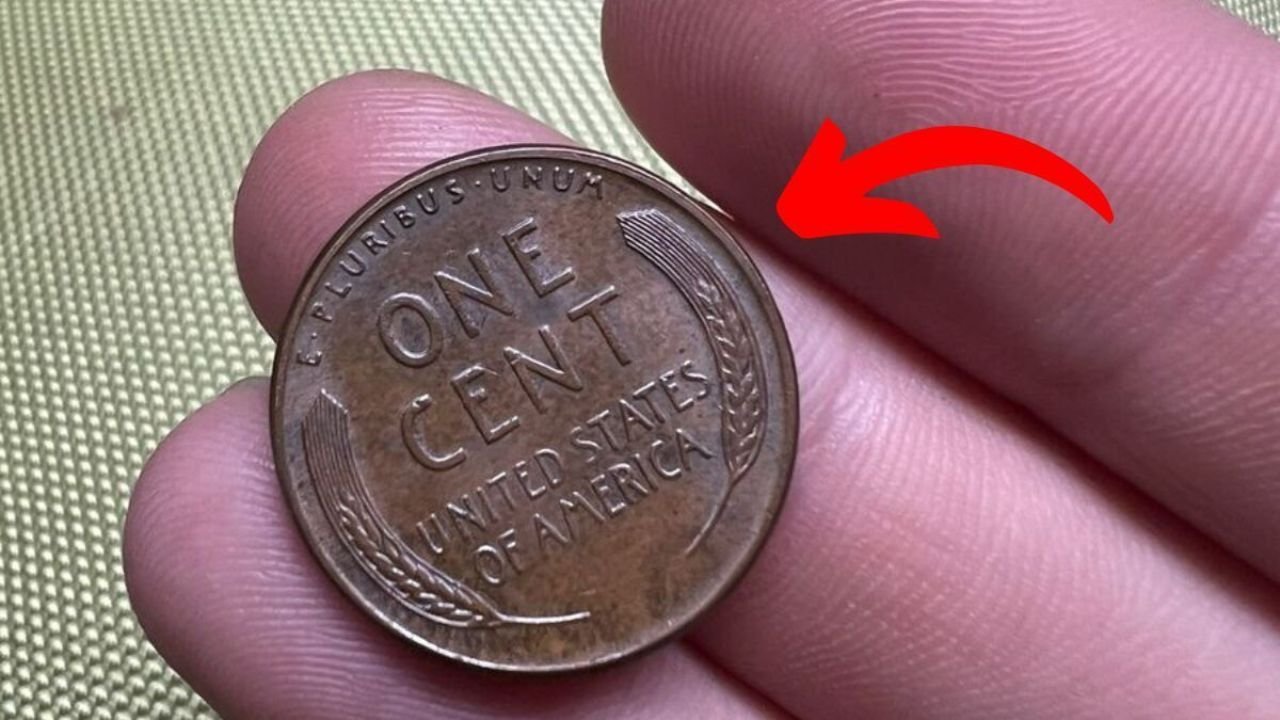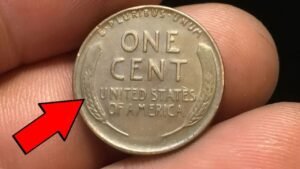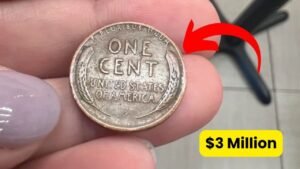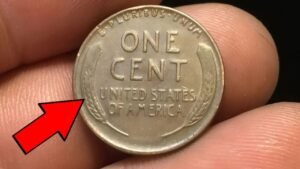Imagine reaching into your pocket, pulling out a penny, and discovering it’s worth $310,000. Sounds like a fairy tale, right? But for a select few Lincoln Wheat Pennies, this dream is very real. These unassuming copper coins, minted between 1909 and 1958, have become some of the most coveted treasures in American numismatics. What’s even more thrilling? Some of these valuable pennies might still be hiding in your change jar, piggy bank, or even the cash register at your local coffee shop. Let’s dive into the fascinating story of the Lincoln Wheat Penny, why certain ones are worth a fortune, and how you might spot one in your everyday life.
The History of the Lincoln Wheat Penny
A Coin That Changed American Currency
In 1909, the U.S. Mint introduced the Lincoln Wheat Penny to celebrate the 100th anniversary of President Abraham Lincoln’s birth. Designed by sculptor Victor David Brenner, this coin was groundbreaking. For the first time, a real historical figure—Lincoln—appeared on a circulating U.S. coin, breaking the tradition of symbolic figures like Lady Liberty. The penny’s obverse featured Lincoln’s dignified profile, while the reverse showcased two wheat stalks framing “ONE CENT,” earning it the nickname “Wheat Penny.”
This iconic design ran for nearly half a century, until 1958, when it was replaced by the Lincoln Memorial design. During its run, billions of Wheat Pennies were minted, passing through countless hands during pivotal moments in American history—the Great Depression, World War II, and the post-war boom. But among these billions, a few rare specimens stand out, commanding jaw-dropping prices at auctions.
Why Are Some Wheat Pennies So Valuable?
The value of certain Lincoln Wheat Pennies comes down to a perfect storm of rarity, historical significance, and minting errors. While most Wheat Pennies are worth just a few cents, specific varieties—like the 1943 bronze penny—can fetch hundreds of thousands of dollars. These coins are rare because of mistakes made during production, limited mintages, or exceptional condition. Let’s explore the star of the show: the 1943 bronze penny, valued at up to $310,000.
The Legendary 1943 Bronze Penny
A Wartime Mistake Worth Millions
During World War II, copper was in high demand for military equipment like shell casings and telegraph wires. To conserve this precious metal, the U.S. Mint switched to zinc-coated steel for penny production in 1943, creating the familiar “steel pennies” with their silvery appearance. However, a small number of copper planchets (the metal blanks used to strike coins) from 1942 were accidentally left in the presses. When these were stamped with the 1943 date, they created one of the rarest coins in American history: the 1943 bronze Lincoln Wheat Penny.
Experts estimate only 20 to 30 of these error coins exist today, making them incredibly scarce. In 2010, one pristine 1943 bronze penny sold for $310,000 at auction, and some have fetched even higher prices, with values reaching over $1 million in rare cases. The combination of extreme rarity, historical context, and the intrigue of a wartime error makes these coins the holy grail for collectors.
Real-Life Discoveries
The possibility that a 1943 bronze penny could still be in circulation is what fuels treasure-hunting dreams. Take the story of Don Lutes Jr., a Massachusetts teenager who, in 1947, received a 1943 bronze penny in change at his high school cafeteria. Unaware of its value, he kept it in his collection for decades. After his death in 2018, the coin was authenticated and sold for $204,000 at auction in 2019. Stories like this show that these treasures can turn up in the most unexpected places—your change jar, an inherited coin collection, or even a roll of pennies from the bank.
How to Spot a Valuable Lincoln Wheat Penny
Key Features to Look For
Want to join the treasure hunt? Here’s how to identify a potentially valuable Lincoln Wheat Penny:
- Date: Only pennies minted between 1909 and 1958 are Wheat Pennies. Key dates to watch for include 1909, 1914, 1922, 1931, 1943, and 1955.
- Mint Marks: Look under the date for a small “S” (San Francisco), “D” (Denver), or no mark (Philadelphia). Certain combinations, like the 1909-S VDB or 1914-D, are especially valuable.
- Color and Composition: For 1943 pennies, check the color. Steel pennies are silvery and magnetic; bronze pennies are reddish-brown and non-magnetic.
- Errors: Look for minting errors like double dies (where the date or lettering appears doubled) or missing mint marks (like the 1922 No D).
- Condition: Coins in “uncirculated” condition—showing no wear and retaining their original luster—are worth significantly more.
The Magnet Test
For 1943 pennies, a simple magnet test can be a game-changer. Grab a magnet and see if the penny sticks. If it does, it’s a common steel penny worth a few cents. If it doesn’t, you might have a rare bronze penny. Weigh it too—bronze pennies are heavier (about 3.11 grams) compared to steel pennies (2.7 grams). But beware: some 1948 pennies have been altered to look like 1943s, so professional authentication is a must.
Other Valuable Wheat Pennies
While the 1943 bronze penny steals the spotlight, other Wheat Pennies can also fetch impressive sums:
- 1909-S VDB: Featuring the designer’s initials, this penny had a limited mintage and can sell for up to $100,000 in pristine condition.
- 1914-D: With low production numbers, this Denver-minted penny can bring $5,000 to $20,000.
- 1922 No D: A minting error where the Denver mint mark was omitted, often valued at around $10,000.
- 1955 Double Die: A striking error causing doubled lettering, this penny can be worth hundreds to thousands of dollars.
What to Do If You Find a Valuable Penny
Handle with Care
If you think you’ve found a rare Wheat Penny, handle it carefully. Never clean the coin, as this can drastically reduce its value. Place it in a protective holder to prevent scratches or damage. Cleaning a coin can strip away its natural patina, which collectors prize, potentially turning a $310,000 penny into one worth just a few dollars.
Seek Professional Authentication
Take your coin to a reputable coin dealer or grading service like the Professional Coin Grading Service (PCGS) or Numismatic Guaranty Corporation (NGC). These experts can verify authenticity, assess condition, and provide an official grade. Counterfeits are common, especially for high-value coins like the 1943 bronze penny, so professional evaluation is critical.
Selling Your Treasure
If your penny is authenticated as valuable, you have several options:
- Coin Dealers: Offer quick appraisals and purchases, though prices may be lower than auctions.
- Online Marketplaces: Platforms like eBay or Heritage Auctions provide broader exposure, but professional grading boosts credibility.
- Auction Houses: For rare finds, major auction houses specializing in coins can maximize value.
Why the Lincoln Wheat Penny Captivates Us
A Piece of American History
Beyond their monetary value, Lincoln Wheat Pennies are tangible links to America’s past. These coins circulated during the Great Depression, when a penny could buy a loaf of bread, and during World War II, when Americans saved them in jars to support the war effort. Each penny carries the stories of the people who held it, from factory workers to soldiers to children buying candy.
The Thrill of the Hunt
The idea that a fortune could be hiding in plain sight keeps collectors and casual treasure hunters alike checking their change. Numismatist John Smith, a coin expert with over 30 years of experience, says, “The Lincoln Wheat Penny is a reminder that history is all around us. Every coin has a story, and some are worth a fortune.” This blend of history, rarity, and potential reward makes coin collecting an exciting hobby.
Valuable Lincoln Wheat Pennies to Watch For
| Year | Mint Mark | Key Feature | Estimated Value |
|---|---|---|---|
| 1943 | None, D, S | Bronze (copper) | $100,000–$310,000+ |
| 1909 | S, VDB | Designer’s initials | Up to $100,000 |
| 1914 | D | Low mintage | $5,000–$20,000 |
| 1922 | No D | Missing mint mark | Around $10,000 |
| 1955 | None | Double die | $100–$2,000+ |
FAQ: Lincoln Wheat Penny Questions Answered
What makes a Lincoln Wheat Penny valuable?
Rarity, minting errors, historical significance, and condition determine a penny’s value. The 1943 bronze penny, for example, is valuable due to its accidental production during WWII.
How can I tell if my 1943 penny is bronze?
Use a magnet test. Steel pennies stick to magnets; bronze pennies don’t. Check the color (reddish-brown for bronze, silvery for steel) and weight (bronze is ~3.11 grams).
Where can I find valuable Wheat Pennies?
Check pocket change, old coin jars, bank rolls, estate sales, or inherited collections. Some have been found in everyday transactions.
Should I clean my penny if I think it’s valuable?
Never clean a coin—it can reduce its value significantly. Store it in a protective holder and seek professional authentication.
How do I sell a valuable Lincoln Wheat Penny?
Get it graded by PCGS or NGC, then sell through reputable coin dealers, online marketplaces, or auction houses specializing in rare coins.
Conclusion: Start Your Treasure Hunt Today
The Lincoln Wheat Penny valued at $310,000 is more than just a coin—it’s a piece of American history and a potential ticket to financial freedom. Whether you’re a seasoned collector or someone who rarely checks their change, the possibility of finding a rare penny adds excitement to everyday life. So, next time you get a handful of coins, take a closer look. That penny in your pocket could be worth a fortune. Start your treasure hunt today, and who knows? You might just uncover a piece of numismatic gold.




